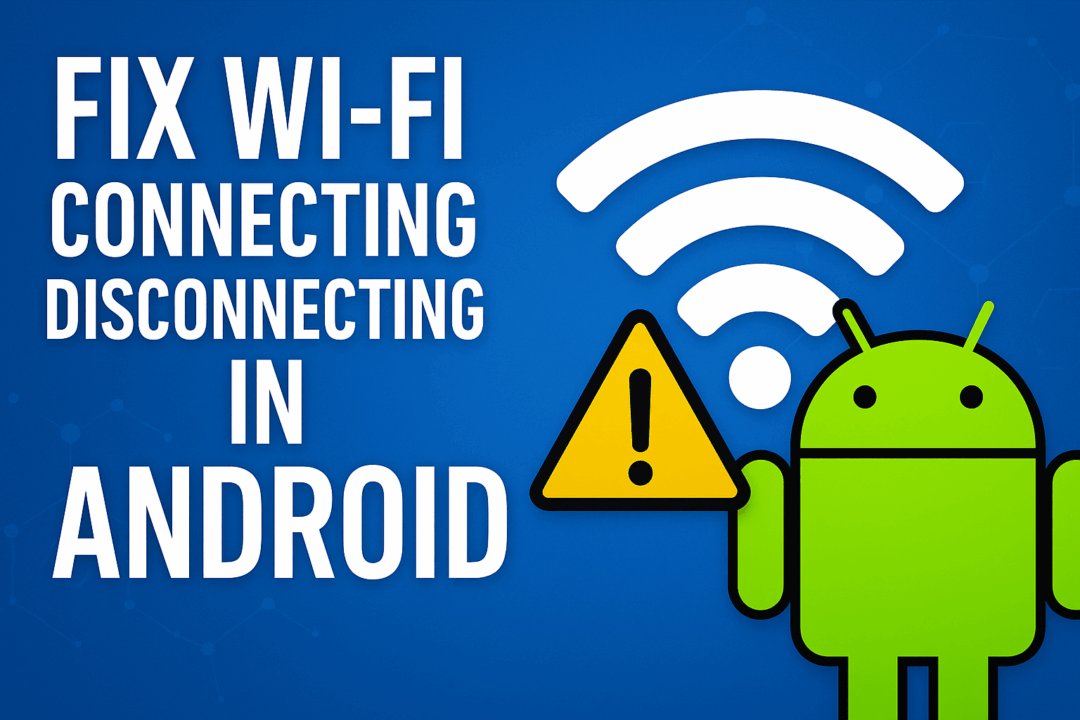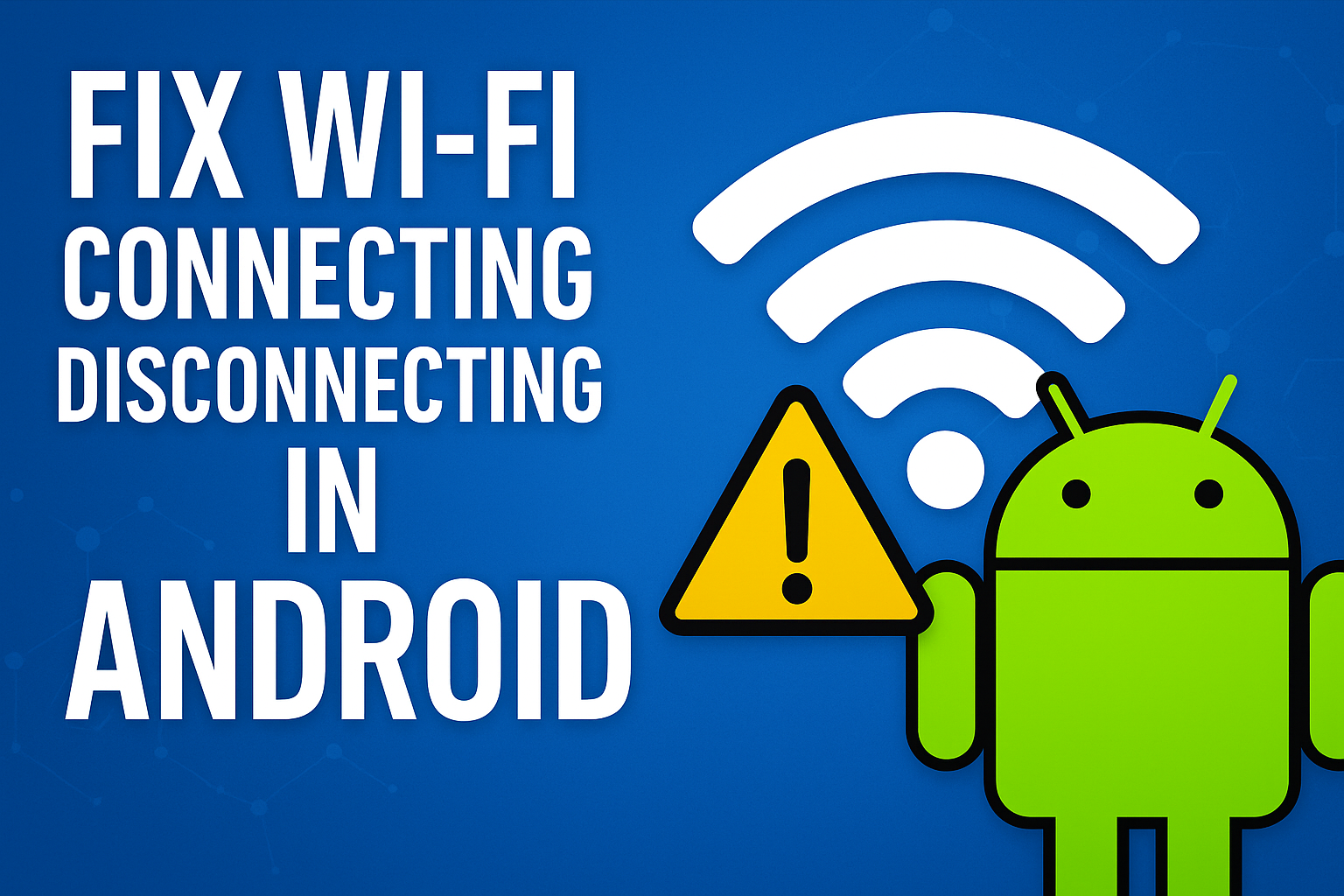WiFi connectivity is one of the most frustrating problems Android mobile users face. Whether your phone wifi connection keeps disconnecting, won’t connect at all, or is just very slow, understanding the root causes and choosing effective solutions can make a huge difference in solving your Wi-fi problem. In this complete guide, we’ll see the most common reasons for WiFi connecting disconnecting issues on Android devices and provide solutions to help you restore smooth and stable wifi connectivity on your phone.

Common Causes of WiFi Connectivity Issues
Before going for solutions, it’s very important to understand whats causing your android phone WiFi to connect and disconnect intermittently:
- Weak Wi-Fi Signal Strength: If you’re far from the WiFi router, then signal may drop off intermittently.
- Network Congestion: If too many devices are connected to the same WiFi, it may cause instability and frequent disconnection.
- Router Issues: Outdated software or faulty hardware can cause connectivity problems on your phone.
- Android OS Bugs: Software glitches, especially after updates, can affect WiFi stability. You must update OS regularly.
- Interference: Certain devices like microwaves, Bluetooth gadgets, or nearby networks can cause interference with your WiFi.
- IP Conflict issue : If multiple android or other devices are trying to use the same IP address, Wi-Fi connectivity will be unstable.
How to Fix WiFi Connecting and Disconnecting Issues
1. Restart Your Device (Android) and Router
One of the best and most effective steps is to restart both Android phone and WiFi router. You need to turn off your router, wait for 30 seconds and turn it back on. This fixes the issue most of the time. Do the same with your smartphone. This refreshes network settings and clears temporary glitches which helps your device to connect to Wi-Fi smoothly.
2. Forget and Reconnect to the Wi-Fi Network
Sometimes, forgetting the WiFi network on your device and reconnecting can resolve connecting and disconnecting issue:
- Go to Android Settings > Network & Internet > WiFi.
- Tap on your Wi-Fi network name. You may need to click on exclamation mark given in front of Wi-Fi name.
- Select Forget Network.
- Reconnect to Wi-Fi by entering the password again.
3. Check Android OS Updates
Android regularly releases OS updates to fix bugs, including connectivity issues. If you keep updating OS from time to time then it fixes previous bugs. If there is any problem with the Wi-Fi software then it might fix it and help you connect to wifi smoothly without any problem.
- Go to Settings > System > System Update.
- If an update is available then download and install it.
4. Adjust WiFi Settings On Your Device
On Android, Navigate to Settings > WiFi > Advanced Settings and:
- Ensure Keep WiFi on during sleep is set to Always.
- Disable Avoid poor connections if it’s enabled.
5. Change DNS Settings Of Your Phone
Try switching to Google’s Public DNS to improve stability:
- Go to Android Settings > WiFi.
- Long-press on your connected network.
- Click on Modify Network.
- Change IP settings to Static.
- Enter
8.8.8.8for DNS 1 and8.8.4.4for DNS 2.
6. Check Router Settings From a Browser
Log into your router’s admin page (usually 192.168.0.1 or 192.168.1.1) and:
- Update your router software.
- Change the WiFi channel to a less crowded one.
- Disable WMM (WiFi Multimedia) if it causes connectivity issues.
7. Reset Network Settings Of Your Android Phone
If issues still persist, reset your network settings by going to below settings:
- Go to Android Settings > System > Reset Options.
- Select Reset Network settings or Reset WiFi, Mobile & Bluetooth.
Advanced Troubleshooting to fix Wi-Fi connecting issue:
8. Check for 3rd Party App Conflicts
Some 3rd party apps, like VPNs/firewall apps, can interfere with WiFi connectivity. Try disabling those apps temporarily to see if your connection stabilizes on your phone.
9. Turn Off Battery Saver Mode
Battery saver mode creates a problem in many activities. Battery saver modes often limit background activities, including WiFi:
- Go to Settings > Battery > Battery Saver. You can also use the search bar at the top to find battery saver option and turn it off.
- Toggle it off and check your connection.
10. Switch WiFi Frequency Band
If your Wi-Fi router supports dual-band, try switching between 2.4GHz and 5GHz:
- Go to Settings > WiFi > Advanced Settings.
- Look for Frequency Band and change it. Restart the devices and try connecting again.
Conclusion
WiFi issues on Android mobile/tablet can come from various problems ranging from simple interference to OS bugs. By following the above steps one by one, Wi-Fi connectivity problems will be fixed. If problem still persists then you may need to call customer service or your internet service provider.





